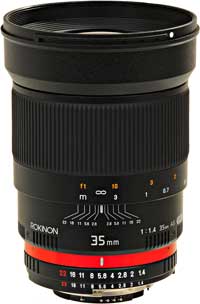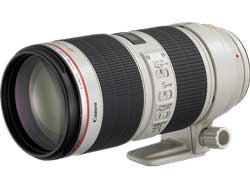Major US camera and lens rental specialist LensRentals.com, has published a valuable and fascinating report on the repair rate of its massive inventory of gear from popular professional brands.

The report lists the 5 percent of products with the shortest average ‘rental weeks to failure’ – that is, weeks in use until the item has to be sent out for repair. The upper limit was set at 60 weeks. Damaged rather than faulty products were not included, but recurring damage – for example a lens in which the MF/AF switch continually breaks, as in the Canon 35mm f1.4 – was included.
The good news is that no cameras were in the ‘shortest time to fail’ list – all the products which needed repair prior to 60 weeks in use were lenses.
The highest repair rate camera was the Nikon D800, with 65 weeks to repair, mostly because of autofocus problems. Nothing else was less than 80 weeks to repair. Camera bodies ‘had the lowest repair rates we’ve seen in 5 years.’
As the author, Roger Cicala notes: ‘These are heavily used, frequently shipped lenses. A lens owned by someone who uses it on weekends, takes good care of it, and doesn’t ship it around the country would have a much lower failure rate.’
While ‘every manufacturer has some great lenses and some weak lenses’, according to Mr Cicala, Rokinon (Samyang) distinguished itself by having the four lenses with the shortest number of ‘rental weeks’ before repair was required – from just 8 ‘rental weeks’ for the Rokinon 35mm f/1.4 to 34 weeks (Rokinon 85mm f1.4). Mr Cicala characterises Rokinon lenses as ‘almost disposable’ as a new lens will cost less than a repair, but also notes that despite their apparent fragility: ‘I think they are incredible bargains with surprisingly good optics.’

There were only two Nikon lenses in the Rogue’s Gallery – the Nikkor 70-20mm F2.8 VR II and the Nikor 14-24mm f2.8, both of which shared the common problem of the zoom jamming, and four Canon lenses, with Sony Sigma, Tamron, Tokina all having two or three on the list. Leica and Zeiss, though stocked by LensRentals, did not feature at all in the high failure list.
To generalise, 70-200mm f2.8 lenses are the most problemmatic, or as Mr Cicala says ’70-200 f2.8 lenses are likely to fail no matter who makes them’.
‘We think of them as “built like tanks” because they have that heavy, all-metal case,’ he explained. ‘That case, though, is as packed with mechanics and electronics as anything you’ve ever seen. There’s a LOT of stuff in there that has to work perfectly. Inevitably, some of that stuff breaks.’
On the other hand, ‘if you want to buy a lens that will last decades, then you want a completely mechanical prime lens. (He excludes Rokinon/Samyang primes lenses from this recommendation!)
‘It is no coincidence that the lenses that last 120+ weeks at Lensrentals are generally primes without image stabilisation, and the ones that frequent the most repaired list are usually zooms with image stabilisation.’
Overall, though, there were no particular positive or negative trends among brands: ‘There are some slight overall differences in repair rate by brand but none that seem statistically significant, or even close to it.
‘I repeat, every brand has some fragile lenses. If you must Fanboy, go ahead,’ he concluded.
Click here for the full report.





Be First to Comment